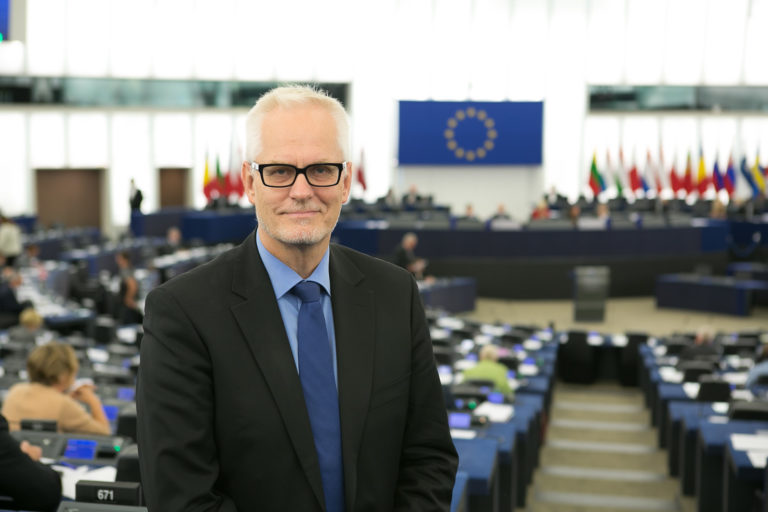Finland needs to reform, or close up shop, MNI Euro Insight
9.6.2015

Finland’s new government was appointed on May 29. The new cabinet, headed by the Centre Party leader Juha Sipilä, consists of 14 ministers representing the Centre Party, the liberal conservative National Coalition Party, and for the first time, the populist Finns Party. The new government has to start its work immediately — it needs to find ways to reform Finland’s economy and to boost competitiveness.
On many occasions the international public has been curious of and sometimes even shocked by the Finns Party’s success in the recent elections. Without defending them, I would like to stress that the current economic situation in Finland is drastic, and the government programme that was published recently shows that all government parties are committed to getting Finland back on track for growth. The new finance minister, Alexander Stubb (of the National Coalition), has a key role determining the direction of the economy.
In May this year, the Commission gave an official warning to Finland when estimates showed that in 2016, Finland’s deficit would continue to exceed the reference value of 3% of GDP and the general government debt would rise above the reference value of 60%. For the last three years, Finland’s growth figures have been negative. Furthermore, the unemployment rate has been increasing steadily. In April the rate was 10.3%, having been 9.0% the year before. Since 2011, workforce productivity has been well below the EU average.
All this shows that the structural reforms the new government is planning are long overdue; they should have been carried out years ago. Now we are in a situation where all reforms need to be pushed at the same time. Reforms in the labour market are especially needed — this is the last chance to change the course of the ship.
Current public discussion in Finland reflects the other side of the same story. It is always difficult to give up the benefits one has gained. Therefore the reforms were not been carried out earlier. Public discussion about the government programme has been circling around the cuts and their negative short-term effects. Little has been said about the long-term positive impact on the economy that urgently needs a U-turn.
The last government consisted of six parties; much of its time was spent on settling internal disputes, and many of the planned reforms were not carried out because of internal opposition. I am hoping that now we have a cabinet that is courageous enough to make the necessary decisions and implement them even if they are painful and receive a lot of criticism from those whom they affect.
And painful they will be — the government has decided on immediate expenditure cuts worth €4bn. The estimates show that the cuts and structural reforms would bolster Finland’s economy by €6bn by 2021.
The new government programme is balanced and taking an important step towards a viable and flexible economy. The painful decisions will affect everybody, not only a certain part of the nation. Therefore, the public pressure the government faces is wide-spread and heavy.
The government will focus on improving employment and competitiveness, reforming competence and education, promoting wellbeing and health, facilitating the bio-economy and clean solutions and reforming ways of working through digitalisation and deregulation. It has decided not to raise income taxes.
One of the key items in the new programme is the reform of labour markets. To increase competitiveness and boost productivity, the government has offered the trade unions and employers’ organisations a so called social-contract, to reduce unit labour costs by at least 5%. The contract includes a better security for employees and a new training model. Average working hours should be increased by 100 hours per year.
If the trade unions and employers’ organisations agree to the contract, the government has promised a €1bn tax cut. The combined outcome should help improve public finances. But without the contract, the government would need to make an extra €1.5bn in cuts to achieve the same result.
The aim of the labour reform is to increase the employment rate from the current 66.6% to 72%, and to increase the number employed by 110,000.
The government programme is a big step towards a healthier economy. The vice-president of the commission, Jyrki Katainen, has stated that the new government programme offers a clear response to how the problems should be solved. Thanks to the planned reforms, Finland has a chance to avoid facing the EU’s excessive deficit procedure. In addition, Finland’s downturn is expected to come to an end. This year’s growth forecast is 0.5% and next year, growth is expected to pick up to 1.4%.
When the programme was published, President Sauli Niinistö encouraged the government but at the same time quite frankly stated that ”You will hear a lot about what should not be done, and less about what should be done. And nothing about where we would be, if nothing is done.”
I could not agree more. Finnish people are known for their persistence and determination and I hope the government shares these qualities. Despite the criticism and pressure, in Finland, we need to decide whether to reform and regain competitiveness or to give up.
Julkaistu MNI Euro Insight -verkkolehdessä 9.6.2015




